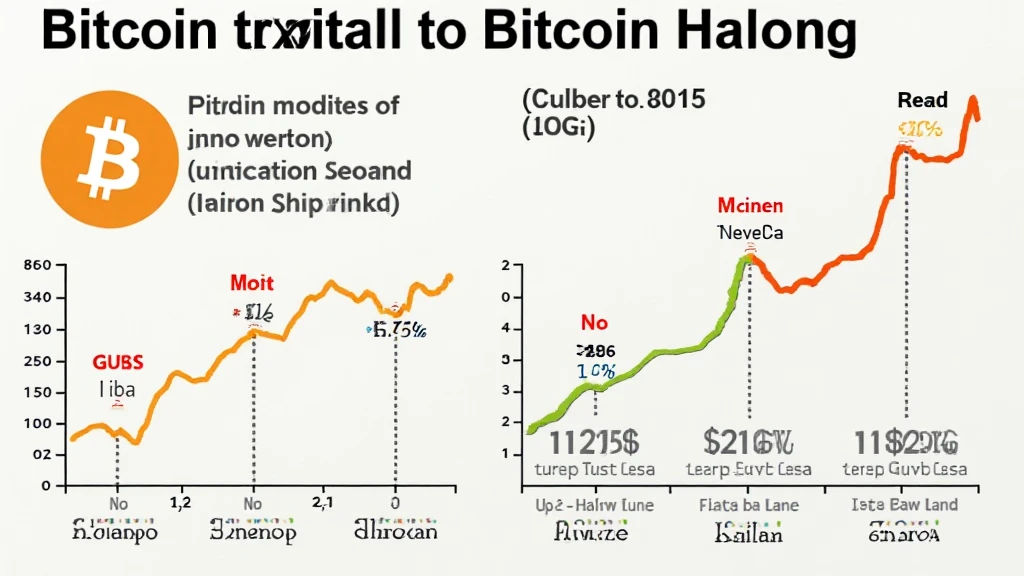The Economic Impact of Bitcoin Halving: Insights for Investors
In the ever-evolving world of cryptocurrencies, one phenomenon continues to capture the attention of investors and enthusiasts alike: Bitcoin Halving. With the potential to double the economic implications of the most popular digital asset, Bitcoin Halving has significant influences on market trends, investing strategies, and even the broader financial landscape. But what exactly is Bitcoin Halving, and how does it affect the economy surrounding digital currencies? Let’s break it down.
In 2024 alone, approximately $4.1B was lost to DeFi hacks. Given this history, understanding the economic ramifications of events like Bitcoin Halving becomes critical for anyone invested in the cryptocurrency sector.
Understanding Bitcoin Halving
Bitcoin Halving is an event that occurs roughly every four years, reducing the rewards given for mining new blocks in half. Initially set at 50 BTC per block in 2009, the reward diminished to 25 BTC in 2012, followed by 12.5 BTC in 2016, and subsequently 6.25 BTC in 2020. The next halving, anticipated in 2024, will reduce this to 3.125 BTC. This built-in mechanism is designed to introduce scarcity into the Bitcoin ecosystem, which may explain its historical price surges following each halving.

- **First Halving (2012):** Bitcoin’s price surged from around $12 to over $1,200.
- **Second Halving (2016):** Prices jumped from $450 to nearly $20,000.
- **Third Halving (2020):** Bitcoin’s value skyrocketed to approximately $60,000.
Such results point to traders and investors closely monitoring these events, viewing them as critical indicators of future price movements.
The Economic Implications Post-Halving
Following each halving, Bitcoin has demonstrated significant economic impacts.
Firstly, the reduced rate at which new Bitcoin enters circulation means supply decreases, while demand remains, potentially driving prices upward. This scenario mirrors the principles of traditional economics: when supply diminishes and demand is sustained, prices generally rise.
Market Psychology and Speculation
Market psychology also plays a pivotal role during the run-up to Bitcoin Halving. Anticipation can lead to speculative trading, as investors position themselves ahead of a perceived price increase. This can create short-term volatility, spurred by bullish sentiment and media attention.
The Role of Miners
Miners are significantly affected by halving events, as their rewards directly decrease. As mining becomes less profitable, some miners might exit the market, potentially impacting the Bitcoin network’s security and transaction speed. However, those who continue can benefit from rising prices in anticipation of increased valuation.
- **Impact on Mining:** Less reward may mean increased competition among remaining miners.
- **Market Entry of New Technologies:** Miners may invest in more efficient hardware to maximize profitability.
Bitcoin Halving and Global Adoption
Despite being often considered an exclusive domain of Western markets, Bitcoin adoption exhibits considerable global appeal, including rising engagement from Vietnam. According to recent statistics, Vietnam’s cryptocurrency adoption rate has surged by over 15% in 2023, indicating growing interest in digital assets within Southeast Asia.
International Transaction Costs
Bitcoin can also influence global financial systems by reducing transaction costs. Traditionally, international money transfers can come with steep fees and currency exchange losses; Bitcoin presents an efficient alternative. As Bitcoin’s value stabilizes post-halving, more individuals in countries with unstable currencies, such as Vietnam, may turn to Bitcoin for remittances and safeguarding their assets.
- **Cost-Effective Remittances:** Bitcoin can streamline cross-border transactions.
- **Alternative Asset Class in Inflationary Nations:** More individuals may use Bitcoin to protect against local economic instability.
The Future of Bitcoin Post-Halving
The next halving set for 2024 is expected to have substantial implications, but it isn’t the only factor influencing Bitcoin’s future.
Technological Developments
Advancements in blockchain technology, such as Layer-2 solutions and scalability improvements, can augment Bitcoin’s usability, reinforcing adoption amidst economic uncertainty.
Regulatory Landscape
The evolving regulatory landscape continues to present both challenges and opportunities. Countries like Vietnam are increasingly formalizing frameworks for digital asset trading, which could foster a more robust environment for cryptocurrencies.
Conclusion: Preparing for Change
As investors and enthusiasts, it’s essential to stay informed about the potential economic impacts of events like Bitcoin Halving. The interplay of supply and demand, miner economics, and global adoption trends may set the stage for new price dynamics in Bitcoin. Being equipped with this knowledge enables you to take strategic positions in the market.
In conclusion, whether you’re new to cryptocurrency or a seasoned trader, the understanding of Bitcoin Halving’s economic impact can provide you significant advantages in anticipating market movements. As we prepare for the next event, consider how these aspects may play out and position yourself accordingly, ensuring you’re not left behind in this fast-paced landscape.
Always consult with financial experts or conduct thorough research before making investment decisions. This article is not financial advice but aims to highlight critical trends and data.
Explore more about these phenomena on hibt.com and learn about the implications for your crypto investments.
For further insights related to the rapid growth of cryptocurrencies in Vietnam, refer to our Vietnam Growth Report.
For more in-depth topics, check our Crypto Tax Guide as well.
For those navigating this space, remember: understanding the economic impact of Bitcoin Halving can enhance your investment decisions and preparedness.
— Expert Author: Dr. James Lin, a leading economist specializing in blockchain technology with over 15 published papers and a major influence in several cryptocurrency audit projects.


